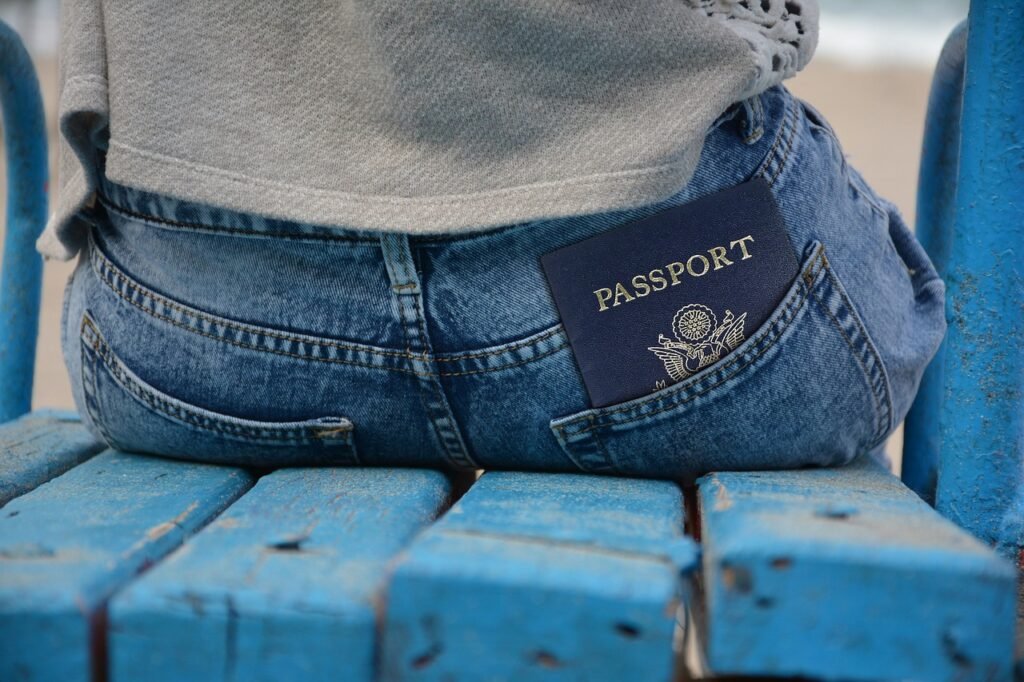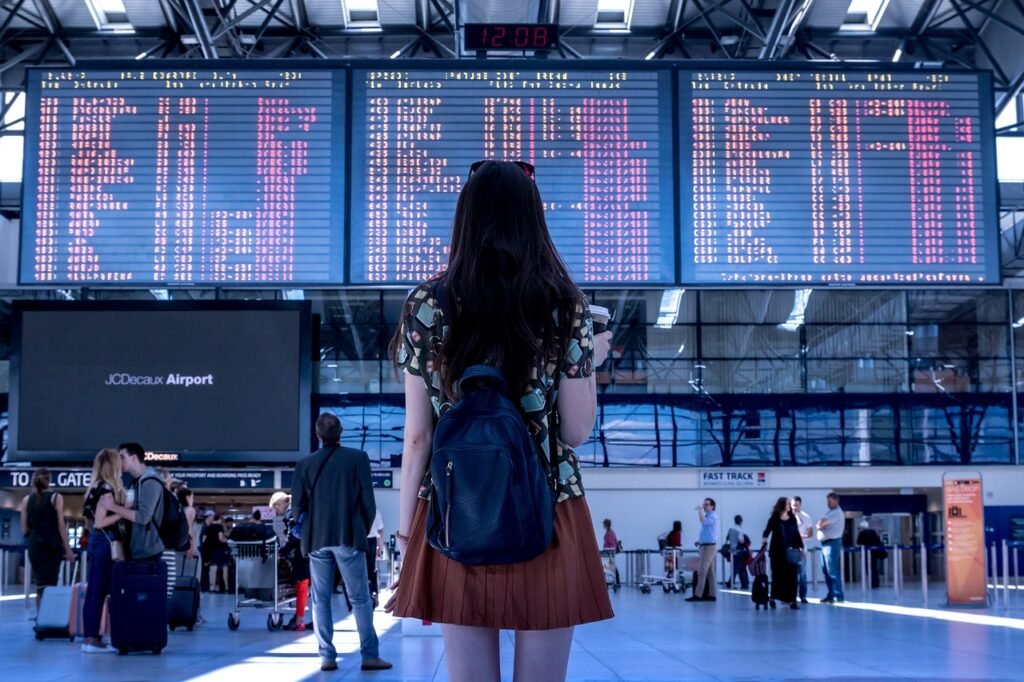Whether you’ve taken plenty of domestic vacations or you’re just starting to get comfortable with traveling, an international trip can feel like a big leap. You’re not just crossing state lines; you’re crossing oceans, cultures, and time zones.
But don’t worry—preparing for your first international adventure doesn’t have to be overwhelming. With the right planning, you can focus on enjoying the journey and making incredible memories.
In this guide, we’ll walk you through everything you need to know about preparing for your first international trip. From passports and packing to language barriers and navigating airports, we’ve got you covered.
1. Get Your Passport and Documents in Order

The first and most important step in preparing for an international trip is ensuring you have all the necessary documents. Your passport is your key to getting in and out of different countries, so it’s essential to take care of this well in advance.
How to Get a Passport
If you don’t have a passport yet, apply for one as soon as possible. It can take several weeks (or even months) to process, so don’t wait until the last minute.
To apply, you’ll need proof of citizenship (such as a birth certificate), a government-issued photo ID (like a driver’s license), and a passport photo. Most post offices and some pharmacies offer passport photo services, so it’s easy to get everything done in one trip.
If you already have a passport, check its expiration date. Many countries require your passport to be valid for at least six months beyond your travel dates.
Visas and Entry Requirements
Depending on where you’re going, you might also need a visa to enter the country. A visa is essentially permission from the destination country to stay there for a certain amount of time.
Check the entry requirements for your destination well in advance. Some countries offer visa-free entry, while others require you to apply for a visa before your trip.
Pro Tip: Make Copies of Your Documents
Before you leave, make copies of your passport, visa (if applicable), and any other important travel documents. Leave a copy with a trusted friend or family member back home and keep another copy in a separate bag from your originals. This way, if anything gets lost or stolen, you’ll have backup information to help you.
2. Research Your Destination
Once your passport is squared away, it’s time for the fun part—learning about your destination! Before you set foot in a new country, it’s helpful to familiarize yourself with the local customs, culture, and basic information. Not only will this help you feel more confident while traveling, but it’ll also show respect to the locals.
Cultural Research:
Language
What language is spoken in your destination? If you don’t speak the language, learning a few basic phrases (like “hello,” “thank you,” and “please”) can go a long way. There are also language apps, like Duolingo or Google Translate, that can help you communicate in a pinch.
Customs and Etiquette
Every country has its own set of customs and social norms. For example, in some cultures, tipping is expected, while in others, it’s considered rude. Doing a little research beforehand can help you avoid any unintentional faux pas.
Currency
Find out what currency is used in the country you’re visiting. It’s helpful to familiarize yourself with the exchange rate so you have a sense of how much things cost. Some countries are more cash-based, while others rely heavily on card payments, so make sure you know which is more common.
Pro Tip: Download Maps and Apps
If you’ll be navigating a foreign city, it’s a good idea to download offline maps or travel apps that can help you get around. Google Maps allows you to download maps for offline use, so you won’t need to rely on data or Wi-Fi to find your way. Also, consider downloading apps like Google Translate or XE Currency Converter to assist with language and currency needs.
3. Book Your Flights and Accommodations
Once you’ve got your documents in order and have done some research on your destination, it’s time to book your flights and accommodations. Depending on where you’re going, international flights can vary greatly in price, so it’s worth shopping around and keeping an eye out for deals.
Booking Flights:
Timing
Flights are often cheaper when booked in advance, but prices can fluctuate depending on the season and destination. Keep an eye on flight comparison sites like Google Flights, Skyscanner, or Kayak to find the best deals.
Layovers
If it’s your first international trip, you might want to avoid flights with long layovers, as they can add unnecessary stress. Direct flights are ideal, but if you have to connect, make sure there’s enough time between flights to comfortably navigate the airport.
Choosing Accommodations
Hotels vs. Rentals: When it comes to accommodations, you have a few options. Hotels offer convenience, while vacation rentals (like Airbnb) can give you a more local, homey experience. Hostels are another budget-friendly option if you’re comfortable sharing space with other travelers.
Location: When choosing where to stay, consider the location. Is it close to public transportation? Are there restaurants or attractions nearby? Staying in a central location can make it easier to explore without having to worry about long commutes.
Pro Tip: Check Reviews
Before you book a hotel or rental, check the reviews from other travelers. This will give you a better idea of what to expect and can help you avoid any unpleasant surprises.
4. Pack Smart for International Travel
Packing for an international trip can feel daunting, especially if you’re going to be away for an extended period. But with a little planning, you can pack efficiently and avoid overpacking.
What to Pack:
Clothing: The key to packing for any trip is versatility. Choose clothing that can be mixed and matched and is appropriate for the climate at your destination. Layering is especially helpful if you’re traveling to a place with varying temperatures.
Comfortable Shoes: You’ll likely be doing a lot of walking while exploring a new country, so pack comfortable shoes that you’ve already broken in. No one wants to deal with blisters on vacation!
Adapters and Converters: One thing many first-time international travelers forget is that different countries use different types of electrical outlets. Make sure to pack an adapter (and a voltage converter if needed) so you can charge your devices.
Travel-Sized Toiletries: While it’s easy to buy toiletries like shampoo and toothpaste at your destination, it’s always good to pack travel-sized versions of your essentials in case you can’t find what you need right away.
Pro Tip: Pack Light
When packing for an international trip, less is often more. Not only will it make getting through airports easier, but it’ll also leave room for any souvenirs you pick up along the way. Stick to the essentials, and you’ll be thankful when you’re not lugging around an oversized suitcase.
5. Navigating Airports and Customs

One of the biggest differences between domestic and international travel is navigating airports and passing through customs. If it’s your first time flying internationally, the process can seem a bit intimidating, but it’s actually pretty straightforward once you know what to expect.
At the Airport:
Arrive Early
For international flights, it’s recommended to arrive at the airport at least three hours before your flight. This gives you plenty of time to check in, go through security, and find your gate without feeling rushed.
Security and Customs
In addition to regular airport security, you’ll need to go through customs when traveling internationally. Customs officers may ask about your travel plans, how long you’ll be staying, and what you’re bringing into the country. As long as you have your documents in order, the process is usually quick and easy.
Baggage Allowance
Be sure to check your airline’s baggage policy before you pack. International flights often have different baggage allowances than domestic ones, and you’ll want to avoid any unexpected fees for overweight or oversized luggage.
Pro Tip: Keep Important Items in Your Carry-On
When flying internationally, it’s always a good idea to pack your essentials in your carry-on bag. This includes your passport, travel documents, medications, a change of clothes, and any valuables. That way, if your checked luggage gets delayed or lost, you’ll still have everything you need to get by for a day or two.
6. Staying Safe and Healthy While Traveling
Safety is a top priority when traveling internationally, and there are a few extra steps you can take to ensure a smooth and enjoyable trip.
Health Precautions:
Vaccinations
Depending on where you’re traveling, you may need certain vaccinations before your trip. Check with your doctor or a travel health clinic to find out which vaccines are recommended for your destination.
Travel Insurance
It’s always a good idea to purchase travel insurance for international trips. This can cover medical emergencies, trip cancellations, lost luggage, and other unexpected events. While no one likes to think about things going wrong, having travel insurance can give you peace of mind.
Safety Tips:
Keep Valuables Secure
Pickpocketing is a common problem in many tourist areas, so be mindful of your belongings. Use a money belt or a secure bag to keep your passport, cash, and credit cards safe.
Be Aware of Your Surroundings
While most places are safe for tourists, it’s important to stay alert and aware of your surroundings, especially in unfamiliar areas. Avoid walking alone at night in areas you’re not familiar with, and trust your instincts if something feels off.
Pro Tip: Register with Your Embassy
Before you leave, consider registering your trip with your country’s embassy. This is especially important if you’re traveling to a country with political instability or other risks. It allows your embassy to contact you in case of an emergency.
7. Embrace the Experience
One of the most important things to remember about your first international trip is to enjoy every moment. It’s normal to feel nervous or overwhelmed at times, but remember that traveling is all about embracing new experiences and stepping outside your comfort zone.
Whether you’re marveling at ancient ruins, trying unfamiliar foods, or navigating a bustling market, every experience is part of the adventure. Keep an open mind, go with the flow, and don’t be afraid to make mistakes along the way. Some of the best travel memories come from the unexpected!
Final Thoughts
Preparing for your first international trip is an exciting process, and with the right planning, you’ll be ready to explore the world with confidence. From securing your passport to packing smart and staying safe, each step brings you closer to an unforgettable adventure. So, take a deep breath, embrace the journey, and get ready to make memories that will last a lifetime! Safe travels!
Explore more. Fear less.
- Why Road Trips are One of the Best Ways to Clear Your Mind - November 21, 2024
- 10 of the Best Pumpkin Patches in the U.S. - October 23, 2024
- 10 of the Most Colorful Fall Road Trips in the U.S. - October 22, 2024
